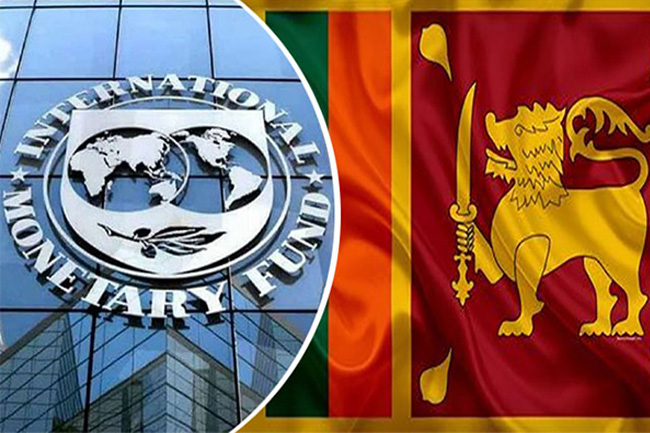Sri Lanka’s Loan Situation – What we took – What we Owe & to Whom

Total Debt: about US $37 billion owed to foreign lenders.
Who Do We Owe?
- International Organizations (Multilateral loans) – ~$12.9B
- Asian Development Bank, World Bank, IMF
- Usually low interest, long repayment periods
- Other Countries (Bilateral loans) – ~$10.8B
- China: $4.9B | Japan: $2.3B | India: $1.4B | Others: $2.2B
- Private Lenders (Commercial loans/ISBs) – ~$13B
- High interest, short-term bonds from global investors
Who Borrowed What? (Government/Presidency Breakdown)
President Mahinda Rajapaksa (2005–2015): ~$10–12B – mostly concessional, sustainable loans
President Sirisena – Ranil Wickremesinghe coalition (2015–2019): ~$17–18B – high-risk commercial borrowings, ISBs, expensive debt
President Gotabaya Rajapaksa (2019–2022): ~$7–8B – inherited debt, some new borrowing
President Ranil Wickremesinghe (2022–present): ~$0.5–1B – post-default IMF program and restructuring
Key Point: Most dangerous debt came from the 2015–2019 Ranil-Sirisena period, particularly ISBs/Eurobonds.
What did each government do with the money they borrowed?
- President Mahinda Rajapaksa (2005–2015) – ~$10–12B
- Mainly concessional loans (low interest, long-term).
- Used for infrastructure, ports, highways, airports, power projects, and social development.
- Most loans were sustainableand contributed to economic growth, connectivity, and long-term assets.
- President Sirisena – Ranil Wickremesinghe coalition (2015–2019) – ~$17–18B
- High-risk commercial borrowings, ISBs/Eurobonds with high interest.
- Funds often used for covering budget deficits, repaying previous debt, and consumption-based spendingrather than productive investment.
- Very few infrastructure projects, many were overpriced or not revenue-generating, adding to debt pressure.
- President Gotabaya Rajapaksa (2019–2022) – ~$7–8B
- Mostly inherited debt; some new borrowing for COVID-19 response, emergency imports (fuel, food, medical supplies).
- Attempted some infrastructure continuation, but funds were limited due to the existing debt burden.
- President Ranil Wickremesinghe (2022–present) – ~$0.5–1B
- Emergency borrowing post-2022 default.
- Mainly IMF program tranches, short-term loans, to stabilize reserves, support essential imports, and manage currency pressures.
- Little or no investment in new infrastructure; focused on debt servicing and fiscal stabilization.
- President Anura Kumara Dissanayake (Sept 2024–present): ~$1.4B+ (new borrowing)
- International Borrowing:
- World Bank: $200 million
- International Monetary Fund (IMF): $334 million
- Domestic Borrowing:
- Central Bank of Sri Lanka: Approximately $866 million
- Use of Funds:Economic recovery, reserve stabilization, and continued debt servicing.
- Impact:Reliance on external financing continues; long-term development remains limited.
Key Takeaways:
- Mahinda Rajapaksa:Growth-oriented, long-term assets, sustainable borrowing.
- Ranil-Sirisena (2015–2019):High-risk, consumption-focused borrowing; dangerous for future generations.
- Gotabaya:Crisis management borrowing; limited development.
- Ranil post-2022:Stabilization and debt servicing; little development.
- AKD:Continued external borrowing;
Key Considerations
Continued Reliance on External Financing:
The government remains dependent on international loans and domestic borrowing to meet financial needs.
Limited Long-Term Development Investment:
Focus is currently on stabilization rather than large-scale infrastructure or development projects.
Sri Lanka’s Debt Repayment Scenario (From 2027)
- Debt Burden
- Sri Lanka will need to pay $3–3.5 billion per year in foreign debt.
- Payments are in USD, so if the rupee weakens, it will cost more in local currency.
- Possible Problems
- Not enough income: If exports, tourism, and remittances don’t grow, the government may struggle to pay.
- Higher taxes: Citizens may face VAT hikes, income tax increases, or new taxes on goods.
- Cuts in services: Health, education, welfare, and subsidies may be reduced.
- Privatization: State assets like ports, airports, or utilities may be sold to raise cash.
- Inflation & higher costs: Prices of essentials could rise, lowering purchasing power.
- Less government control: IMF and lenders may dictate economic policies.
- Social tension: Economic hardship may cause strikes, protests, and instability.
- Key Insights
- Main cause: High-risk borrowing during 2015–2019 (ISBs/Eurobonds).
- Borrowing under Mahinda Rajapaksa was more sustainable and growth-focused.
- From 2027, debt payments will dominate the budget, leaving little for development.
- What Citizens Can Do
- Stay informed:Understand where taxes and subsidies are going.
- Reduce personal debt:Avoid excessive borrowing in unstable times.
- Support local products:Helps improve exports and national income.
- Participate in community savings or cooperatives:Strengthen local resilience.
- Advocate for accountability:Demand transparency in government borrowing and spending.
- Pressure Points for Government
- Debt restructuring:Negotiate better terms with lenders to reduce interest or extend repayment.
- Control borrowing:Avoid high-interest commercial loans and risky bonds.
- Increase revenue efficiently:Focus on exports, tourism, and foreign investment.
- Cut unnecessary spending:Reduce waste instead of cutting essential services.
- Protect strategic assets:Limit privatization of key national resources.
- Transparency:Regularly publish debt and spending data to build trust and citizen support.
From 2027, Sri Lanka faces a tight budget, higher taxes, and inflation risks due to debt. Citizens can prepare by staying informed, supporting the economy, and demanding government accountability. The government must focus on responsible borrowing, boosting income, and protecting citizens from the worst impacts.
Shenali D Waduge
Note: Figures are based on internet sources & public domain







